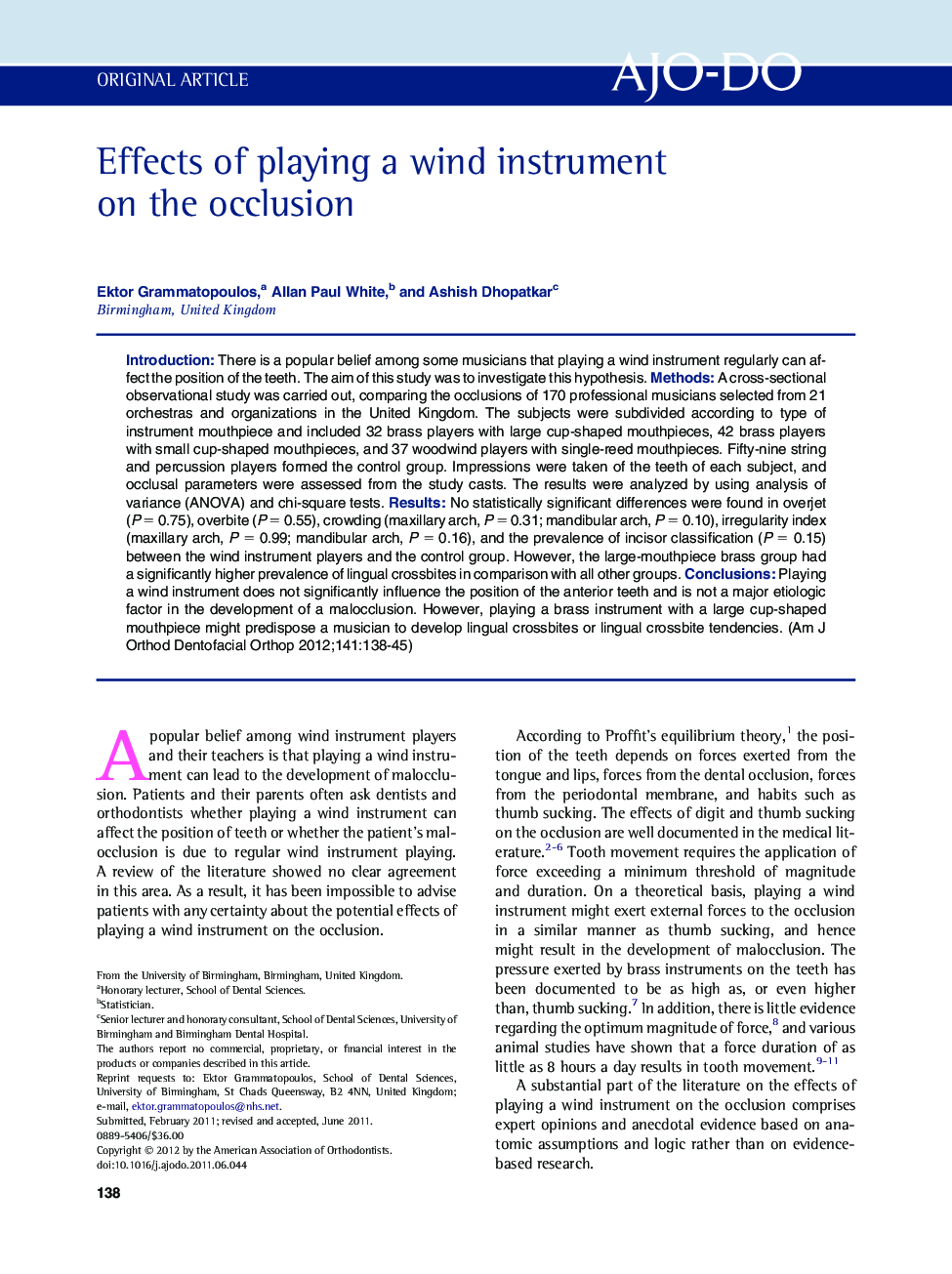| Article ID | Journal | Published Year | Pages | File Type |
|---|---|---|---|---|
| 3117074 | American Journal of Orthodontics and Dentofacial Orthopedics | 2012 | 8 Pages |
IntroductionThere is a popular belief among some musicians that playing a wind instrument regularly can affect the position of the teeth. The aim of this study was to investigate this hypothesis.MethodsA cross-sectional observational study was carried out, comparing the occlusions of 170 professional musicians selected from 21 orchestras and organizations in the United Kingdom. The subjects were subdivided according to type of instrument mouthpiece and included 32 brass players with large cup-shaped mouthpieces, 42 brass players with small cup-shaped mouthpieces, and 37 woodwind players with single-reed mouthpieces. Fifty-nine string and percussion players formed the control group. Impressions were taken of the teeth of each subject, and occlusal parameters were assessed from the study casts. The results were analyzed by using analysis of variance (ANOVA) and chi-square tests.ResultsNo statistically significant differences were found in overjet (P = 0.75), overbite (P = 0.55), crowding (maxillary arch, P = 0.31; mandibular arch, P = 0.10), irregularity index (maxillary arch, P = 0.99; mandibular arch, P = 0.16), and the prevalence of incisor classification (P = 0.15) between the wind instrument players and the control group. However, the large-mouthpiece brass group had a significantly higher prevalence of lingual crossbites in comparison with all other groups.ConclusionsPlaying a wind instrument does not significantly influence the position of the anterior teeth and is not a major etiologic factor in the development of a malocclusion. However, playing a brass instrument with a large cup-shaped mouthpiece might predispose a musician to develop lingual crossbites or lingual crossbite tendencies.
